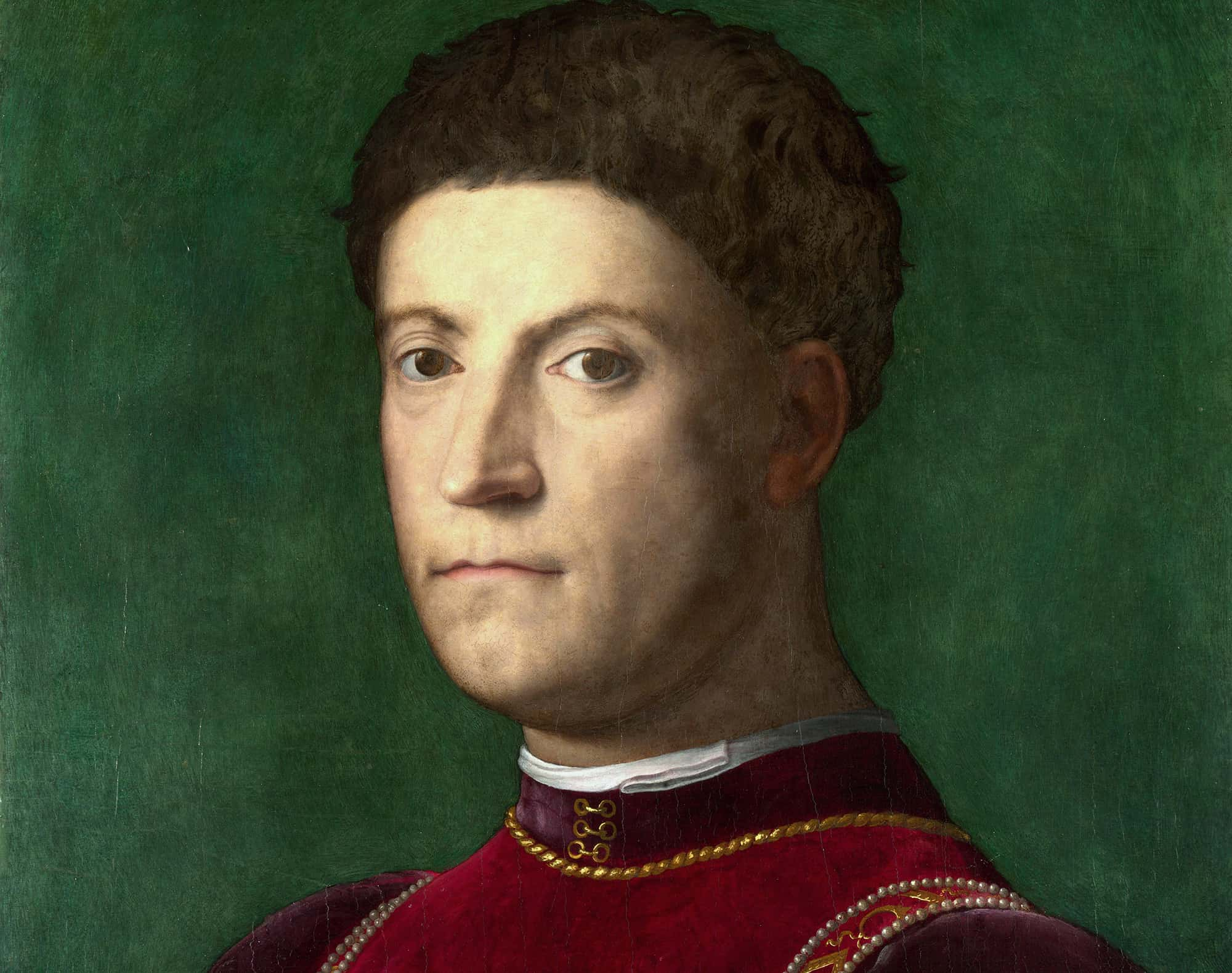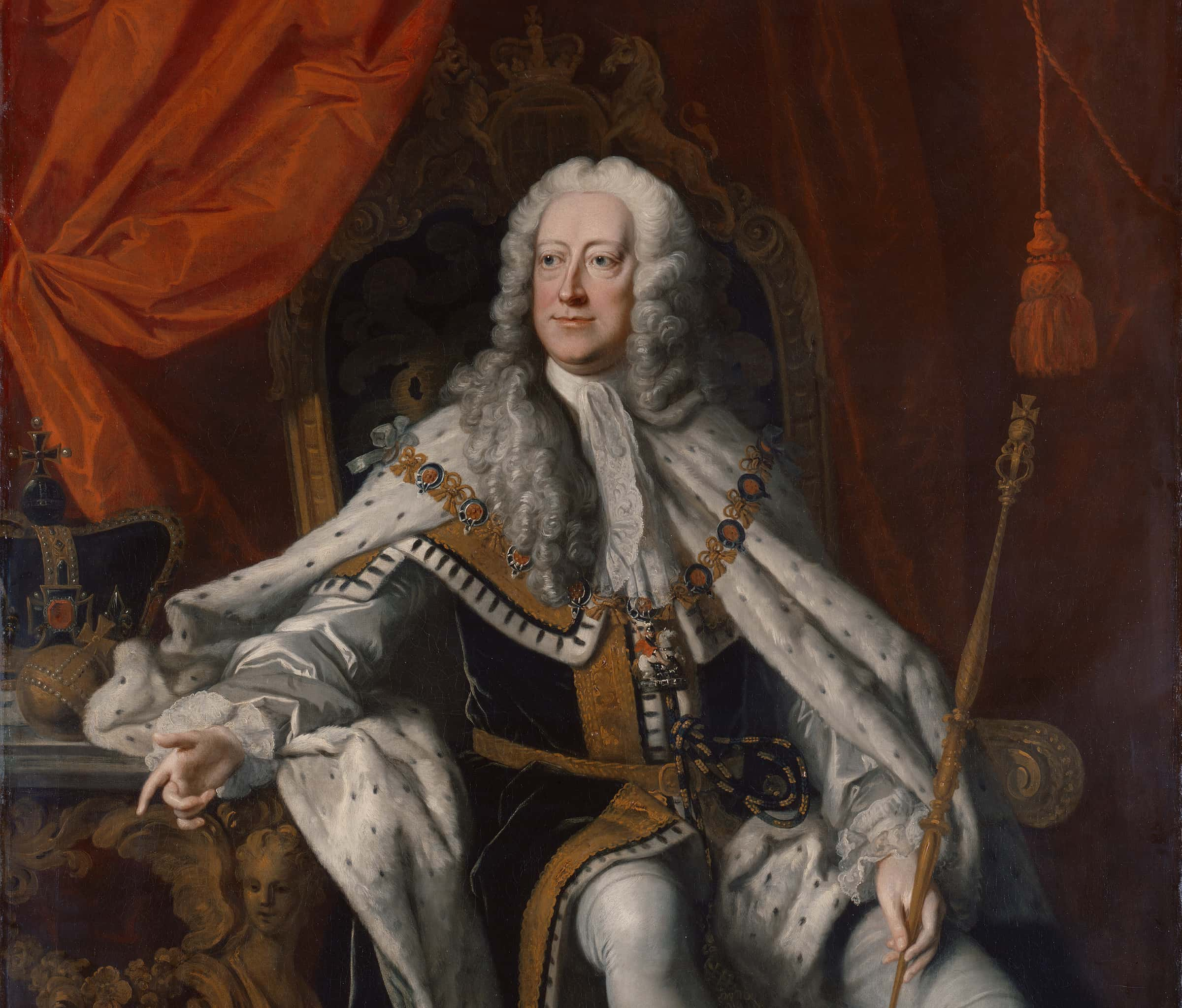“Happy families are all alike; every unhappy family is unhappy in its own way".—Leo Tolstoy, Anna Karenina
It isn’t just a game show: family feuds are the stuff of any good history textbook. With luck, the “family feud” refers to one family versus another family. But sometimes, the fighting happens inside a house, pitting brother against sister. With luck, the fighting won’t take everyone down with it. From feudal times to the wild west, the defending of “family territory” was cause enough for bloodshed on a mass scale. In the following stories, sometimes the fighting didn’t stop until the government stepped in. Go back far enough, and these feuds will have weird origins, from stolen graves to stolen pigs. But is any cause “petty” when it comes to family?
Wherever family is involved, it’s hard to repeat the mafia mantra of “Nothing personal. It’s just business". It’s family—of course it’s personal. From vengeful cowboy bros to bloodthirsty movie stars, take a side with these 42 ruthless facts about brutal family feuds.
1. It Never Stops
The “Gunfight at the O.K. Corral” in 1881 lasted only 30 seconds, but its history, before and after, is much longer. It was the culmination between an outlaw group called the “Cowboys” against Western legend Wyatt Earp and his brothers. Ultimately, the body count was only three—all on the side of the Cowboys. The lawmen were completely exonerated by the courts, but the Cowboys did get their revenge on Virgil and Moran Earp years later.

2. You’re Out
Amid 15th century Florence, the Pazzi thought to topple the scary House of Medici as rulers. Thus, the rival clan sent assassins to kill the Medici sons Giuliano and Lorenzo. Unfortunately for the Pazzis, only Giuliano was slain; Lorenzo survived and was not happy. The Pazzis who were actively involved were executed in brutal ways (Jacopo de' Pazzi was brutally slain, buried, then his body was dug up and his rotting head was used as a door-knocker). The less complicit Pazzi were “spared” with exile—a fate which some of these ambitious folks considered worse than being put to the sword.
3. Brawling Bros
If you’re an Oasis fan, you might know that the sibling frontmen, Liam and Noel Gallagher, have a relationship that is less than harmonic. Their rivalry has broken out into both Twitter and physical fights. As of 2018, they were still estranged after Noel stated he had zero intention of returning to the band.
4. That’s Stone-Cold, Bro
Cain and Abel perhaps invented sibling rivalry for the Christian world. These biblical siblings both worked the land, with Cain as the farmer and little brother Abel as the shepherd. When God favored Abel’s sacrifice instead of the big brother’s, Cain took things (and a stone) into his own hands and slew Abel. In response, God punished Cain by making him wander in “East of Eden” with a mark of shame for the rest of his life.
5. A Little Help from My Friends
The Taira family ruled Japan’s imperial government for most of the 12th century. The rival Minamoto clan did not like this. After a failed rebellion in 1160, the Minamoto came back with a bunch of other disgruntled families, causing a nation-wide conflict that didn’t end until 1185, after tens of thousands of lives had been shed.
6. There Can Only Be One
Cosimo de Medici and Luca Albizzi were from two of the most powerful families in 15th century Florence, but having to share power didn’t stop them from being friends. Of course, Luca’s brother Rinaldo thought differently when Luca married a Medici bride and pled allegiance to the big banking family. He planned a botched coup against Cosimo that backfired and got all the Albizzi banished from Florence.
7. No Switching Sides
Although the American Civil War ended in 1865, it kept on raging in one small region of Texas thanks to a local feud. When Bob Lee (not Robert E., but a Confederate soldier) found out that a man named Lewis Peacock was housing black people and union sympathizers just a few miles from the Lee home, he wasn't about to roll over and let it go. The conflict kept escalating, seeing many people wounded and one man killed until Peacock eventually called in the cavalry—literally. He sought help from the federal government, and they sent members of the US Cavalry to support him. It was these cavalrymen who eventually gunned Lee down in 1869, though the conflict would continue until 1871 when Peacock himself was slain.
8. Exchanging Unpleasantries
By the end of the 19th century, the Grahams and the Tewksburys were two Arizonian ranching families that lived in peace and cooperation. But in 1882, a man named James Stinson came along to accuse the Tewksburys of cattle theft. To their shock, Stinson convinced the Grahams to take his side in the case. What followed next were a series of gunfights, what can only be described as “cowboy vengeance,” and even assassinations in the ten-year conflict that would be known ironically as “The Pleasant Valley War".
9. Every Rose Has Its Cousin-Slaying Thorns
The Wars of the Roses could occupy a list of its own (and it does!). This was a not-unrare case of family feuds happening within the family. The House of York and the House of Lancaster were cousins, two branches descended from King Edward III of England. When the Lancastrian King Henry VI proved incapable of rule, the York cousins took initiative, and also his throne. What followed was time of conflict and battle that didn’t stop for three decades.
10. What If His Head Just Did That?
When Edward IV took the throne (for the second time) in the Wars of the Roses, there was the question of what to do with his distant cousin, the recently deposed Henry VI. That seemed to resolve itself when Henry VI perished in captivity of “melancholy". However, it’s more widely accepted—today and back then too—he was slain by his newly crowned kin.
11. Piggyback: Civil Conflict
Before there were the Wars of the Roses, England saw cousins fight in the Percy vs. Neville rivalry. These two noble houses fought for decades for control of northern England. A fight even broke out in rather undignified fists at a 1453 wedding. Naturally, they took opposing sides in the ensuing Wars of the Roses.
 The Hollow Crown (2012– ), BBC
The Hollow Crown (2012– ), BBC
12. Battle Never Changes
The Taylors were a post-Civil War clan in Texas who were still die-hard Confederates. After committing repeated acts of brutality against African Americans and symbols of Reconstruction, they drew the ire of the law-abiding Sutton family. After a Sutton man killed a Taylor man as a suspected thief, the feud became bloody. It only ended in 1876, after dozens of lives were lost and the Texas Rangers stepped in. This is yet another case where one could argue the that civil conflict didn’t “end”—it just changed course southwards and inwards.
13. In the Doghouse
You don’t get the title “The Queen of Mean” for being generous to your fellow human beings. When hotelier Leona Helmsley passed in 2007, she left $12 million to her white Maltese terrier, named Trouble, while two of her grandkids received nothing (the other two received $10 million on the condition they visit their father’s grave once a year). A judge declared Helmsley made this will while mentally unfit and the other two grandkids received their $6 million (although Trouble did get a not-bad $2 million). That is definitely the kind of ruthless behavior that starts family feuds, though.
14. The World’s Biggest Playpen
Not every clan feud needs to be wasteful. When the 14th century Scottish clan of Chattan thought to take on a rival (thought to be Clan Cameron), King Robert III offered a solution that would minimize collateral damage: Each family would choose 30 of its best men to send on the battlefield, where they would have a well-contained free-for-all until one house emerged victorious. The winner of the “Battle of the North Inch” was none other than the plaintiff, Clan Chattan.
15. Canucks Clash
Whoever said Canadians are always polite hasn’t read up on history. Or on the “Black Donnellys". This 19th-century Irish immigrant family of Biddulph, Ontario didn’t have one specific feud with a family. They had many. After many run-ins with the law, the members of the town simply had enough—they got together in 1880 and charged the Donnelly’s farm. The riot took the lives of “only” five of the dreaded clan, but it went down in history as part of Canada’s bloodiest feuds.
16. Three Against Dad
Henry II of England was pretty good at running the Angevin Empire. He was less good at running a family. His wife, the cunning Eleanor of Aquitaine, became estranged from her husband and encouraged their three sons to rebel against daddy in 1173. The uprising was quashed, but family dinners were forever awkward.
17. Getting In On the Action
As we’ve established, the Houses of York and Lancaster weren’t the only families to get in on the feud action leading up to the War of the Roses. For one, the Bonvilles and Courtenays of Western England used the royal cousins’ conflict to hash out their own beef with each other. The Courtenays joined the red rose Lancasters, while the Bonvilles went white with the Yorks. In the end, we should look at the War of the Roses as less one big conflict and more of a franchise of family beef quashing.
18. Polling Day Pile-On
The Turks vs. Jones feud of the Ozark Mountains began, as so many feuds do, with booze and politics. In 1840s, a member of each clan got into a post-polling day scuffle that was joined in by members of their family. It escalated into judicial accusations when the Turks turned in a Jones relative to a bounty hunter… only to get apprehended for kidnapping him. Let down by the justice system, the Turks, naturally, declared their intent to start a vigilante group called the “Slickers". Also naturally, the Slickers almost exclusively went after the Joneses and their friends.
19. Getting Ahead of Little Cousin
Mary the Queen of Scots and Queen Elizabeth I of England were cousins, and as such, they both had a claim on the English throne. When Mary fell out of favor with her own country and Elizabeth became Queen, Elizabeth was kind enough to give her cousin sanctuary. In house arrest. For almost 20 years. After a few attempts on Elizabeth's life that were possibly connected to Mary, Elizabeth put her foot down and had Mary executed in 1587. Hard to believe this was such a big beef when the two never actually met in person.
20. Foot In Mouth Syndrome
File this under the feuds that could have been much bloodier: Adolf and Rudolf Dassler were two German brothers who started a huge shoe company in the 1920s. For ambiguous reasons, their brotherly love soured by WWII. When Adolf entered a bomb shelter where Rudolf and his family were hiding, Adolf reportedly said, “The dirty b*stards are here again". Some say Adolf was talking about the bombers, but Rudolf took it as a threat against his own. Their company wouldn't survive their feud, and they would each end up at the head of their own shoe empires: Adolf running Adidas (which is a portmanteau of his first and last names) and Rudolf running Puma. I'd say they both did alright.
21. Shoe Away the Competition
The Dassler brother feud literally split a town in half. To this day, their hometown of Herzogenaurach is cut down the middle, with Rudolf’s Puma supporters living on one side of the river and Adolph's Adidas supporters living on the other.
22. When They Ran Out of Dads To Kill
The Wild West feud between the Boyces and the Sneeds began with love. In 1911, an already-married Lena Sneed and Albert Boyce Jr. became involved, and she demanded a divorce from her husband, John Sneed. Naturally, he responded by denying her request and committing her to an asylum, where Boyce rescued her, before they ran away to Canada. Sneed tried to file kidnapping charges, but when that failed, he settled for murdering Boyce’s father. What followed was a mistrial against John Sneed for murder, which triggered the murder of Sneed’s father in response. Finally, Albert Boyce returned from Canada to kill Sneed himself, bringing the murder and love triangle to a close. (If you’re wondering, Boyce was acquitted for Sneed’s murder because his actions were justified at the time in Texas).
23. Grave Matters
The Shim vs. Yoon family feud of South Korea began in the mid-1700s and didn’t show signs of ending until 2008. The original cause? A grave. In the 18th century, the Yoons discovered that the Shims had laid one of their more famous members—an ex-prime minister—to rest on the same hill outside the burial site of their own favored ancestor. Fights over who owned the gravesite became violent; at one point, the King demanded the exile of each family's patriarch. But in 2008, the Yoons donated land to the Shims so the latter would relocate their prime minister’s grave to the site and settle the fighting. But you’ll never guess why that didn’t happen…
24. Don’t You Dare Stop Fighting
In 2008, the Yoons were totally willing to give Shims their longed-for gravesite and let 300-year-old bygones be bygones. Unfortunately, a local cultural commission blocked this peace offering. Why? The feud was declared an important part of their nation’s history and to move the tombs and end this conflict would be erasing cultural evidence. It turns out, family feuds are good for business.
25. Don’t Have a Cow, Fam
Florida wasn’t always retirees and palm trees: in the 1870s, the state was also home to (1) cattle and (2) the Barber-Mizell family feud. These worlds came to a head when the ex-Confederate Moses Barber became convinced he didn’t have to pay taxes to the government. Unfortunately, David Mizell was the sheriff of Orange County and took Barber’s cattle as tax payment. Fed up, Barber fatally shot Mizell for stepping on his property. With his dying breath, Mizell told his family not to avenge his demise. They did not listen.
26. I Now Pronounce You Peace Treaty and Wife
While the Barber-Mizell feud began in the 1870s but didn’t end until the 1940s. How? A Barber married a Mizell—just like the friar from Romeo & Juliet envisioned, but in America and with cowboy hats.
27. Let It Go
Thanks to the ancient Albanian tradition of “Gjakmarrja” (aka “blood taking”), family feuds can last for literal generations. “Gjakmarrja” refers to a man’s duty to murder until a wrong becomes a right. After the collapse of the Communist government in the 1990s, the one-curtailed practice came back into fashion for a time. As a result, there was a generation of children who never left their home for fear of someone “righting” an age-old “wrong” with their blood. It got so bad that a wide-scale reconciliation project was undertaken in Kosovo around this time to settle all these old blood feuds. In the largest such event, in 1990, between 100,000 and 500,000 people participated in a communal day of beef-squashing.
28. Having Dad’s Back
Don’t mess with this guy’s dad: John Early was accused of harassing the elderly Drew Halsey in the 1860s. When Halsey’s son Sam came back from the Confederate army, he was incensed about his dad’s treatment under Early and other Union Reconstructionist forces. Soon, the Halsey gang was openly defying the Union, but one member pursued an Early man, Dr. Calvin Clark, until the grave.
29. Cold Case
When Law and Order League gunman John “Pink” Higgins shot down one of the outlaw Horrell brothers, his surviving kin did not take it well. The Horrell brothers gathered several allies and challenged him and his allies in the town square. Less than a year later, two of the brothers went to prison and were slain in custody. Some suspected Mr. "Law and Order" Higgins of foul play, but no one could prove anything.
30. Punk’d
One of the last “great” feuds of the American West was the Brooks-McFarland conflict of Oklahoma. Taking place between 1896 and 1902, the fighting began when Thomas Brooks was slain while attempting to mug a Texas Ranger. Somehow, Brooks’s family decided that McFarland family was the bad guy here; it was allegedly Jim McFarland who had convinced Thomas to target the ranger and then tipped off the law. That's a rather convoluted plan, but hey, I don't know how they did things in turn of the century Oklahoma.
31. No Taksie Backsies
It sucks when a friend pulls out of a promise. In the late 1890s, the uber-powerful US senator Mark Townsend was supposed to back Sam Reese for the position of sheriff in Columbus, Texas (the Lone Star States does seem to be a bit of a common denominator in this list, doesn't it?). But at the last minute, he backed out and supported Larkin Hope. Suspiciously, Hope kicked the bucket and all suspected Reese. Reese insisted on confronting the Townsend allies, which ended with him getting shot. Naturally, the Reese family sought revenge, but it didn’t go great: after five more shoot-outs, they managed to sacrifice Sam’s brother, Dick Reese. If you’re keeping count, that’s two sons lost over a broken promise.
32. $$$ Before Bros
Larry and Jimmy Flint, of Hustler empire fame, have not talked to each other since 2011, after Jimmy filed a suit saying he was wrongfully terminated from the company and that he was the true brainchild behind the magazine. Larry responded to the suit by firing Jimmy’s two sons and trying to evict him from his own Hustler store in downtown Cincinnati. If porno-kings can't get along, then what hope do any of us have?
33. No Girls Allowed
After the demise of his son, King Henry I of England made an heir of his surviving daughter, the future Empress Matilda. But when he passed on in 1126, the people did not welcome a female ruler, in part because of her cousin Stephen's claims to the throne. What followed was a 19-year-long civil conflict. Stephen won, but not for long: it is ultimately Matilda’s line, through her son Henry II, who still sits on the throne of England.
34. Fleeing the Nest
Hating your dad is part of the House of Hanover package. George II of England and his son Prince Frederick were barely speaking to each other by 1737. Frederick was so filled with spite against his dad that he made his pregnant wife smuggle herself away from court and give birth outside of the palace out of fear of his father forcing them to be there any longer.
35. Oh, Rats
When Prince Frederick of England broke protocol by making his wife give birth outside of the palace, his mother, Queen Caroline, was relived that her daughter-in-law had given birth to a “poor, ugly little she-mouse” instead of a “large, fat, healthy boy". That comment could not have helped improve family relations.
36. Sinister Sisters
Olivia de Havilland and Joan Fontaine were sisters and Oscar-winners, but despite all they had in common, the two spent most of their lives absolutely hating each other. As children, they competed for the attention of their mother and as adults, they competed for men, film roles, and awards. In 1942, they viciously fought for the Best Actress Oscar that eventually went to Fontaine. Things only got worse with their mother’s passing; Fontaine said her sister never told her of their mother’s passing, at which de Havilland responded that her sister was too busy to attend the wake. According to reports, they stopped talking completely after that.
37. You Know What You Did
Joan Crawford made headlines (and inspired TV shows) for her rivalry with Bette Davis, but it’s not like Crawford’s family life was feud-free. In 1977, Crawford’s daughter Christine wrote a memoir, Mommie Dearest, which detailed her mother’s abusive perfectionism. For that, Crawford removed Christina (and her brother) from her will for “reasons well known to them".
38. Sleep Tight
No one’s saying the 17th century Scottish Highlands were fun for everybody, but the Campbell vs. MacDonald clan feud showed just how brutal it could be. The two families fought and took cattle from each other for years, until the tension came to ahead in what became known as the Glencoe Massacre of February 1692. After the MacDonald family refused to swear loyalty to the newly crowned King William and Queen Mary of England, the government sanctioned harm against them. An army, led by Robert Campbell, made their way to Glencoe where the MacDonalds granted them sanctuary. After two weeks of peace, the troopers took the lives of 38 MacDonald men, women, and children as they slept. Though the slaughter was the result of many factors, historian Lord Macaulay noted the feud between the Campbells and MacDonalds as a key motivating factor for Robert and his men.
39. Don't Be a Hog
The Hatfields and McCoys had been fighting for decades, but it was a hog that broke the camel’s back in 1888. The McCoy patriarch, Randolph, accused the Hatfields of stealing one of his pigs. Due to the influence of William “Devil Anse” Hatfield, the McCoys found they could not find justice by lawful means. So, they went for blood in what would be known as the New Year’s Massacre. The gunfire was so brutal, the US Supreme court actually had to step in to try and put a stop to the feud.
40. Blame the Baby
While the pig drama certainly contributed to the Hatfield-McCoy feud, the families had more salacious reasons to fight. Roseanna McCoy began an intimate relationship with Johnson “Johnse” Hatfield, only for him to abandon her when she got pregnant. Did that have something to do with Roseanna’s brothers stabbing Johnse’s uncle 26 times and then shooting him in the chest? Possibly.
41. A Song of Stabs and Fire
In another feud that echoes the Game of Thrones Red Wedding, what became known as the “Black Dinner” started with the royal Stewart vs. Douglas feud in Scottish royalty. In 1440, two young members of the Douglas clan were invited to dine with James II, the ten-year-old boy-king from the Stewart clan. The three boys were allegedly having a great time together when the Douglas brothers were dragged out into the courtyard, given a false trial and beheaded for treason, all while the young king pleaded for their lives. This may have been harrowing for some children, but James seems to have taken it in stride, because he lived to personally stab another Douglas a few years later, and ended up on the winning side of decades of conflict between the two clans.
42. Wise Guys
George “Bugs” Moran did not agree with Al Capone’s involvement in the adult industry. In 1920s Chicago, the city was divided down the middle between Capone and Moran’s families, but these ideological conflicts made things more personal and less “business". The climax of their feud came on Valentine’s Day 1929 when a group of men sent by Capone dressed up like law enforcement officers and rounded up Moran’s crew under the pretense of arresting them, only to open fire and slaughter the lot of them. Try chocolates next time, Al.
Sources: 1, 2, 3, 4, 5, 6, 7, 8, 9, 10, 11, 12, 13, 14, 15, 16















































